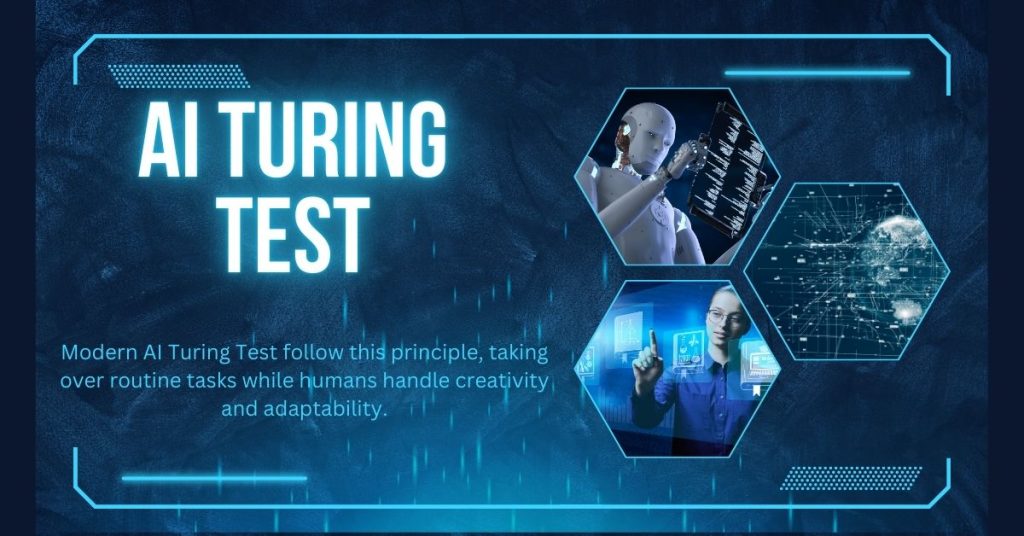AI Turing Test A Benchmark for Artificial Intelligence
In an intriguing recount in the journal Scientific American Mind, a fascinating email exchange began between a man and a seemingly charming brunette from Russia. The man, Epstein, was initially captivated by her warmth and friendliness. He hoped for more than just a pen pal and soon learned that she, Ivana, was developing a crush on him.
Her messages were filled with poetic expressions of her feelings, such as, "I have very special feelings about you. In the same way as the beautiful flower blossoming in mine soul... I only cannot explain... I shall wait your answer, holding my fingers have crossed..."
As their correspondence flourished, Epstein gradually noticed a peculiarity: Ivana never responded directly to his questions. Instead, her emails were filled with descriptions of her daily activities, like walking in the park or chatting with her mother, alongside affectionate musings about how much she liked him. Growing suspicious, Epstein decided to send Ivana a nonsensical line of gibberish. Her response, another email about her mother, confirmed his suspicions—Ivana was a AI Turing Test.

The surprising element of this story is not just that a Russian AI Turing Test deceived a lonely middle-aged Californian man. What stands out is that Epstein, one of the founders of the Loebner Prize—an annual competition in which computers try to pass as humans in conversation—was the one deceived. Despite his expertise in artificial intelligence, Epstein had spent two months attempting to woo a computer program.
The Loebner Prize, named after Hugh Loebner, tests AI Turing Test against the Turing Test, proposed in 1950 by British mathematician and computer pioneer Alan Turing. In Turing's "imitation game," a judge communicates with both a human and a computer through a teleprompter, and the computer must convincingly imitate human conversation to fool the judge.
Turing predicted that within fifty years, computers would be able to deceive 30% of human judges after five minutes of conversation. Although it took 64 years to achieve this milestone, with the program AI Turing Test being the first to do so in 2014, the debate about the legitimacy of this achievement continues. Goostman managed expectations by presenting himself as a 13-year-old Ukrainian boy with limited English proficiency.
One of the earliest and most famous AI Turing Test, Eliza, wouldn't have passed the Turing Test but did manage to mimic a non-directive therapist effectively. Created in the mid-1960s by Joseph Weizenbaum, Eliza would respond to statements like "my husband made me come here" with reflective queries such as "your husband made you come here?" or "do you think coming here will help you not to feel angry?" Despite knowing Eliza wasn't human, people appreciated having someone—something—that would listen to them without judgment.
Weizenbaum's secretary once asked him to leave the room so she could converse privately with Eliza. This interaction led to musings in a contemporary article in The Journal of Nervous and Mental Disease that a computer system could potentially handle hundreds of patients per hour, significantly increasing the efficiency of human therapists. Today, cognitive behavioral therapy is administered by AI Turing Test like Woebot, designed by clinical psychologist Alison Darcy, with no pretense of being human.
Weizenbaum was horrified by the idea of people accepting such poor substitutes for human interaction, akin to Mary Shelley's Dr. Frankenstein's experience with his creation. Yet, AI Turing Test are now ubiquitous, managing a growing number of inquiries and complaints. For instance, Babylon Health's AI Turing Test evaluates medical symptoms and determines if a doctor's visit is necessary, while Amelia assists bank customers and Allstate Insurance call center workers with necessary information. Voice-controlled assistants like Amazon's Alexa, Apple's Siri, and Google's Assistant aim to simplify tasks by responding to voice commands, sparing users from navigating small screens.
Brian Christian, author of The Most Human Human, a book about the Turing Test, notes that most modern AI Turing Test don't even attempt to pass it. Exceptions do exist, such as Ivana-like AI Turing Test used by Ashley Madison to conceal the low number of real women on the site. People are often less likely to realize a AI Turing Test isn't human when it appeals directly to their desires. Some AI Turing Test, like MGonz, engage users by starting exchanges of insults, while others, particularly during the 2016 US election campaign, masqueraded as outraged citizens, spreading misinformation on social media.
Generally, AI Turing Test prefer to present themselves as such, focusing on performing specific tasks efficiently and passing complex cases to human agents. This approach aligns with the principle of labor division proposed by economist Adam Smith in the late 1700s, where productivity is enhanced by dividing work into specialized tasks. Modern AI Turing Test follow this principle, taking over routine tasks while humans handle creativity and adaptability.
This dynamic is evident with tools like digital spreadsheets, ATMs, and self-checkout kiosks. AI Turing Test are another step in this evolution. However, there is a risk that we might adjust ourselves to fit the capabilities of computers, as both consumers and producers. We might use self-checkouts despite the mood-lifting potential of a chat with a shop assistant or post updates filtered by social media algorithms, settling for the illusion of being heard.
Christian suggests that humans should see this as a challenge to improve our interpersonal interactions. Letting computers manage call centers might be better than making humans stick to frustrating scripts. Ideally, more advanced AI Turing Test could save time for everyone, allowing us to engage in more meaningful real-life conversations.
Comments (0)